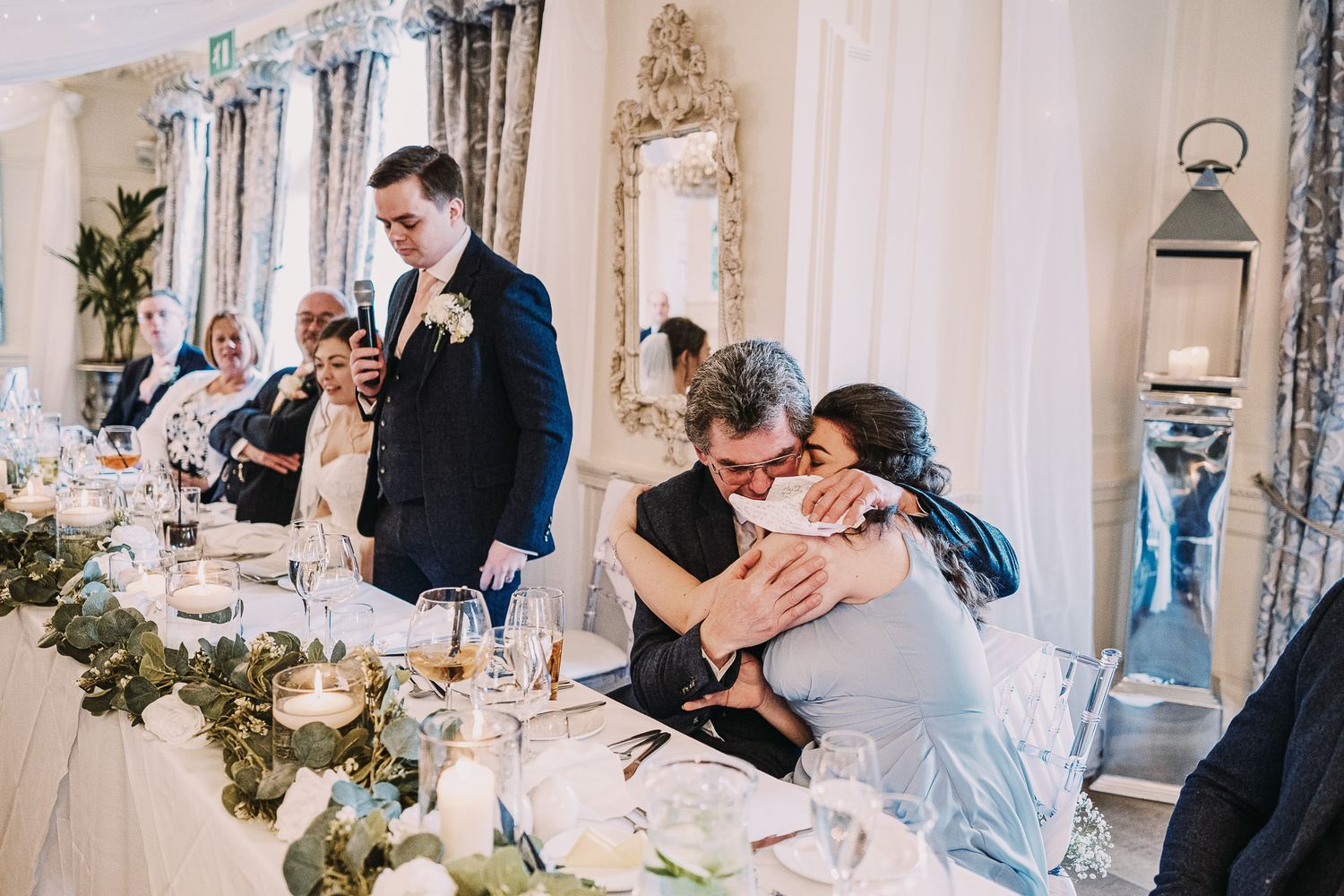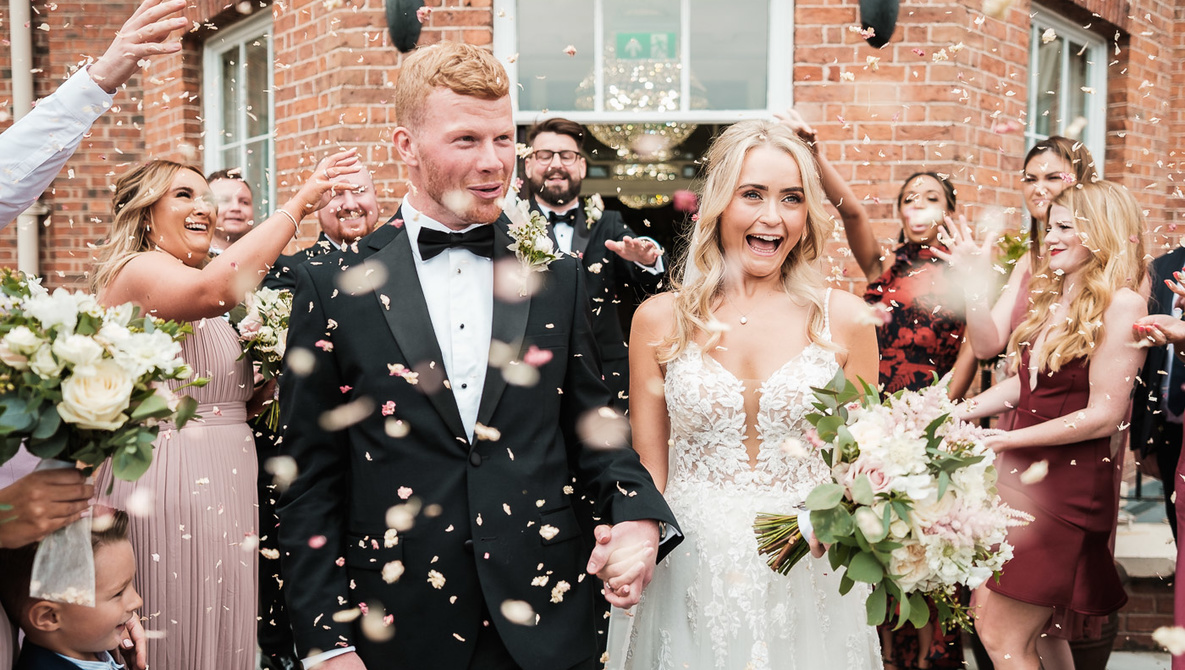Over the last few years, weddings have become much more relaxed, and documentary wedding photography is taking over. How can reducing our need to make choices when shooting help our candid game?
I want to make things clear: documentary wedding photography isn't just about taking photos of people when they're unaware. To me, it's about capturing the story of the day. Think about the terms we are using: documentary, reportage, photojournalistic. They all essentially mean the same thing. They take reality and create a true story and narrative for our entertainment.
The wedding has a start, a middle, and an ending. The story shows people being themselves, the events from the day unraveling, and, perhaps most importantly, the connections and emotions that people share.

Light, Composition, and Moment
A good friend and great mentor once told me that excellent photographs have three essential elements. These are pleasing or interesting light, good composition, and a compelling moment. I agree 100%. We have more control over composition than the other two aspects, but we can help the other two out — to create our luck, if you will.
Personal choice means I don't add any light until I push what my cameras are capable of, preferring to use the available light. Therefore, I need to position myself so that the best light available hits what I would like to photograph. Of course, this isn't always possible, but anticipating what will happen next helps us decide where to position the camera. This anticipation will also help with capturing great moments.
When shooting a wedding, I like to keep around 10 seconds ahead of what I think will be a nice moment. Ten seconds doesn't sound like much time to take a critical photograph, and it isn't, but that's why we need to keep things simple.
Let's have an example of a moment unfolding. Take a typical "just married" moment at most weddings (where the ceremony isn't a church) and discuss how we can capture it. The happy couple will walk down the aisle as newlyweds; I will position myself to capture that, usually about halfway along the passageway so that I can walk backward with them. The couple will walk past me, and I will have my shot. Great!
Is it time to look at the back of the camera and admire my work? Oh, heck no! There's another moment unfolding. The newlyweds are walking toward a venue staff member who has some drinks for them. They then have their first moment alone.
Their personalities will be shining now, as they can finally breathe. And that's where I am, taking photographs of this beautiful and intimate moment. I've been there for about 10 seconds. I'm already thinking about the moment in about 10 seconds when the important people will also walk up the aisle and give the bride a congratulatory cuddle. For this, I'll be thinking about standing behind the bride.
My day unravels this way, and that's how we capture the moments, in good light, with thought-about composition.

Keeping It Simple
For me, the way I work is a balance between efficiency and being free. Freedom comes from keeping the entire process as uncomplicated as possible whilst still delivering fantastic quality work to my couples. I try to keep the need to make decisions to an absolute minimum on wedding days so that the things happening around me have my full attention.
Why do they need it? As documentary-style photographers, our job is to see and then capture. Sometimes, this happens in a second or two, and we need to be able to react. If you add one more decision, a lens change, for example, we miss the moment, and that moment is gone forever.
I want to be free to capture what my eyes see. So, my only decision should be my composition. What the camera is doing should be second nature and not a conscious thought process.

Wedding Photography Equipment
Every brand makes excellent cameras, but Fujifilm gear just works for me. I love the way that the cameras work, the clicky dials, and the vintage vibe. They have bodies that fit nicely into my (weird, tiny) hands. I also enjoy the files that I get from my cameras.
My Fujifilm X-T3 cameras are small and light APS-C bodies: nconspicuous, fast, durable, weather-sealed, and with dual card slots. The newer X-T4 also delivers the same functionality as I use it.
The Fujifilm XF 18mm f/1.4 R LM WR is my workhorse lens. I often joke that I see in 18mm. I know what will be in my frame before I raise the camera to my eye. The lens is fast, sharp, and not overly big or heavy. A 28mm full frame equivalent, it would be my desert island lens. The wide angle means I can get closer and fit more into my frame. I enjoy being in the moment than further away with a longer lens.
The Fujifilm XF 33mm f/1.4 R LM WR is the other lens I use at weddings. I keep this on a second body. I grab this when I need a little more reach.
I keep two batteries in my back pocket and usually leave my emergency gear in the car: my LED lights for the dance floor, a backup body, and a longer lens (Fujifilm XF 56mm f/1.2).
Many wedding photographers would scoff at this equipment. Where is the 70-200mm zoom? What about off-camera flash? I've used that stuff in the past and now like to be free from this. Excellent documentary work won't come from dragging around a 100 kg bag full of unusual lenses and options. It will come from being able to see and capture moments without the extra decisions. 
Newbie Settings for Professional Work
My camera is set up like a point-and-shoot! People often assume that professional photographers must shoot in manual mode, which is not true. Our modern cameras are incredibly clever. They can make hundreds of decisions every second, so I allow them to do just that, while taking control of the things I need.
Below is a settings recipe enabling me to work faster and change settings less often.
Aperture Priority: I have my shutter and ISO set to auto. I decide on the aperture based on my depth of field choice.
Auto-ISO: My ISO is at a maximum ISO of 12,800 before the camera drops the shutter below 1/250 s. By setting this, I can shoot in 99% of lighting situations without touching my settings. I would much rather have grain over blur!
White Balance: If you're beginning to notice a pattern, you won't be surprised here. The white balance in my cameras is set to auto. Fujifilm cameras generally do a great job with white balance, and I will be able to adjust the raw files later if needed.
Autofocus: I set single point autofocus. I can focus and recompose quickly. There is a small switch on the front of the camera to change to continuous AF if something is about to move and I need to track it. Some people prefer back-button focus, but that doesn't work well for me.
Metering: I find it quicker to spot-meter and lock the exposure if I need to rather than ride the exposure compensation dial.
I always shoot in raw, two memory cards, and with face detection off. 
Should You Shoot This Way?
I know that this way of shooting isn't for everyone! Many photographers will prefer to be more in control of their subjects. For me, I love the excitement of the unknown. I love documenting honest, happy moments. This isn't a long article and will only scratch the surface.
If we can take one thing away, it’s this: every time we add a decision that needs to be made on the fly, we add an opportunity to miss the shot. When we miss fewer shots, we become better photographers.







I am not and never have been a specialist wedding photographer but have been asked to cover four weddings because the couples liked my "documentary style" of photographing events and people. One couple even submitted some of my images to a web and print magazine/blog that is all about simple weddings and they were accepted. The last wedding I did recently was the hardest and strangest venue...they were married on the tiny, narrow back deck of a passenger ferry while crossing Newcastle Harbour...there were 10 in the whole wedding party...all family...the deck was just wide enough for two people to stand if they didn't mind rubbing shoulders and maybe four metres long...we did do some family and couple shots once we hit the wharf
Nice article, and I share your passion for documentary-style wedding photography. I try wherever possible to shoot with 'available light' and whilst I will exploit natural light at every opportunity, sometimes 'available light' means reaching into my bag for some 'available' off-camera flash!
I adopt a 3 prime lens approach (full frame): 35mm, 50mm and 85mm. Each of these give me fast performance (f1.4) and beautiful creamy bokeh. I have dabbled with a 70-200mm from time to time but I find that this makes me lazy and encourages me to isolate individuals (ie portrait style) rather than immersing myself in the crowd.
As for "keeping it simple", I applaud that sentiment; but the reality is far from simple (as you say). With the rapidly changing story of a wedding, it is essential to understand fully the limitations of employing automatic/semi-automatic functions in a modern DSLR or Mirrorless equivalent. Key amongst these is Auto White Balance. I prefer to control the temperature of my images to make colour correction easy in editing (I should add that I am not always successful).
Some interesting observations, however I use a couple of Nikon D5 and shoot available light https://howardbarnettphotography.co.uk
Good article. THis is my approach 98% of the time, unless paid vry well to do otherwise.